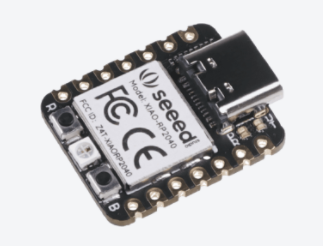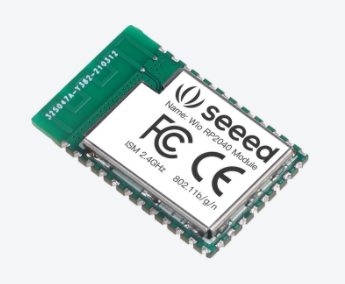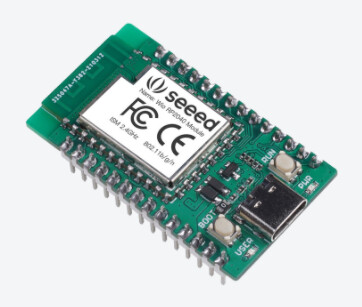RP2040
The new, cost-effective and versatile microcontrollers built with RP2040 that supports MicroPython and C/C++.
XIAO RP2040
XIAO RP2040 is like Seeeduino XIAO, it is a compact board with a wide range of interfaces. The XIAO RP2040 is equipped with the Raspberry RP2040 chip (Dual-core ARM® Cortex® M0+ @133MHz). Powerful performance and low power, ideal for various wearable and small projects.
● Powerful MCU: Dual-core ARM Cortex M0+ processor, flexible clock running up to 133 MHz
● Rich on-chip resources: 264KB of SRAM, and 2MB of onboard Flash memory
● Flexible compatibility: Support Micropython/Arduino/CircuitPython
● Easy project operation: Breadboard-friendly & SMD design, no components on the back
● Small size: As small as a thumb(20x17.5mm) for wearable devices and small projects
● Multiple interfaces: 11 digital pins, 4 analog pins, 11 PWM Pins,1 I2C interface, 1 UART interface, 1 SPI interface, 1 SWD Bonding pad interface
● Broad compatibility: Pins compatible with Seeeduino XIAO and supports Seeeduino XIAO’s Expansion board
Wio RP2040 Module
Wio RP2040 module is a wireless MicroPython module independently developed by Seeed using RP2040 + WiFi chip. RP2040 chip (cortex M0 +) with dual core up to 133MHz. The module is a low-power microcontroller with wireless function. It has powerful performance and small design size, which is very suitable for various IoT projects, and the module can be easily welded on various PCB backboards.
● Dual-core ARM Cortex M0+ processor, flexible clock running up to 133 MHz
● 264KB of SRAM, and 2MB of on-board flash memory
● Using powerful WiFi chip, supporting 2.4~2.4835 GHz frequency and AP&Station mode
● Comprehensive C/C++/MicroPython SDK, software examples, and documentation
● Extremely compact size: 18.0x 28.2x 1.0mm 32 pins SMT
Wio RP2040 Module
Wio RP2040 Mini dev board is a development board with wireless function and supporting MicroPython Programming based on Wio RP2040 module. It is a low-power microcontroller with wireless function. With powerful performance and small design size, it is very suitable for various IoT projects.
● Dual-core ARM Cortex M0+ processor, flexible clock running up to 133 MHz
● 264KB of SRAM, and 2MB of on-board flash memory
● Using powerful WiFi chip, supporting 2.4~2.4835 GHz frequency and AP&Station mode
● Comprehensive C/C++/MicroPython SDK, software examples, and documentation
● Breadboard friendly


